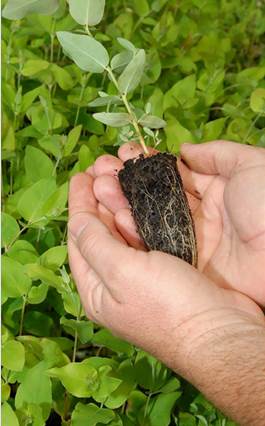You already know that trees are used to make paper. You probably already know that trees can also be used to make fibres for textiles. But cutting down trees to make things is bad, right? Wrong. Here’s what you should know…
We live in a world that has developed an addiction to fossil-based products – from gasoline to jet fuel, from polyester to plastic bottles. Ours is an addiction born of convenience – it has been all too easy for far too long to drill, mine and then make the things that have come to power our global economy.
We also live in a world that has woken up to the need for change. A world where consumers and brands are driving governments, regulators and businesses to turn away from a linear economy model of exploit, discard and let the planet live with the consequences. Where an awareness of the importance of sustainability today to our shared tomorrow is leading forward-thinking brands to embrace new ways of making products and doing business built on the long-term benefits of a bio-based circular economy.
For us at Sappi, that is where the power of trees comes in.
With a proud heritage in making wood-based forest products for textiles, paper and paper packaging, we continue to provide sustainable solutions that harness the power of trees to substitute a wide variety of today’s fossil-based products.
For a fashion industry that increasingly seeks sustainable solutions, we provide pulp fibres in the shape of Sappi Verve, already used to produce versatile, high-quality lyocell and viscose fibre.
Like all wood-based materials, these fibres are renewable, biodegradable and readily recyclable – meaning consumers can experience comfort and quality without worrying about the environmental downsides that still come with so many of the items in today’s shopping basket.
But what about those trees? We need trees to help us sequester the carbon we are churning out by consuming all those fossil-based products in the first place. We need trees to produce the oxygen we breath and to foster the biodiversity that sustains and enriches the world around us.
So how does Sappi make producing viscose and lyocell from trees truly sustainable? How do you harness the power of trees without diminishing the very resource your scientists are coming up with, ever more clever ways to make the most of?
Here’s how.
You source your woodfibre responsibly and sustainably – and you make sure all that is verifiable, too. At Sappi, all our fibre-based solutions are produced from renewable, wood-based raw materials sourced from sustainably managed forests and traceable to plantation of origin.
That means sourcing woodfibre from forests certified under rigorous FSC, PEFC, SFI or equivalent standards. These certifications show that Sappi has robust measures in place to ensure that our supply chains are deforestation-free, including employing our own due diligence systems to monitor supplies of the woodfibre raw materials used.
That means going further by collaborating with landowners to develop and execute sustainable forest management plans that work in harmony with the natural, long-term growth cycle of the trees at the same time as fostering healthy biodiversity within the forest. It means actively implementing responsible water stewardship practices and programmes from forest to pulp mill.
And it means going further again, engaging with local communities, a crucial stakeholder to create shared value and upliftment.

All this is what sets Sappi Verve apart in the market today.
Textile fibre made from Sappi Verve is not just coming from a company with a history of product excellence in pulp and paper. It is coming from a company on a mission to make not just what it can, but what it should – and to do that in ways that benefit people, planet and prosperity.








Comments